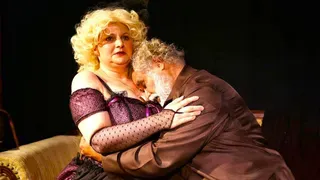June 11, 2013
The Great Southern Babylon: Sex, Race, and Respectability in New Orleans, 1865-1920
Phil Hall READ TIME: 1 MIN.
Alecia P. Long's delightful "The Great Southern Babylon: Sex, Race, and Respectability in New Orleans, 1865-1920" traces the unique mix of race, gender, politics, social class struggles, commerce and prostitution in the Crescent City in the period following the end of the Civil War up until the Roaring Twenties. Despite its location in the heart of the former Confederacy and the uncommonly large Roman Catholic presence, New Orleans' attitude towards the sex trade and race relations truly set it apart from the rest of the country.
Despite repeated attempts by vice-obsessed politicians and civic leaders to either stamp out the sex trade or to, at the very least, segregate it into the city's Storyville district (and then to further segregate Storyville along racial lines), this sector of the economy nonetheless thrived in a seemingly endless number of "concert saloons" and brothels. Many of the madams and prostitutes, both white and black and mixed-race, provided an uncommonly strong will and fierce entrepreneurial spirit, to the point of even publishing advertisements and business cards to market their services. Most notable was the fiery Willie Piazza, a mixed-race prostitute and madam who used the courts to prevent her eviction from a fashionable section of Storyville because of her racial heritage. Incredibly, the Louisiana Supreme Court sided with her.
As a social and economic history lesson, "The Great Southern Babylon" is very much in a class by itself. Long's writing is spirited and compelling and she provides a worthy tribute to the unlikely working-class heroines of New Orleans' past.
Phil Hall is the author of "The Greatest Bad Movies of All Time







